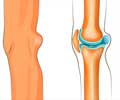Anesthesia for a single total knee replacement surgery was found to have a carbon footprint equivalent to driving a car 42 miles.

‘A carbon footprint is the amount of carbon dioxide and other carbon compounds emitted due to the consumption of fossil fuels by a particular person, group or activity.’





Dr. McGain and colleagues performed a life cycle assessment to estimate the CO2 emissions that resulted from knee replacement surgery. Life cycle assessments consider not only the greenhouse gases directly produced by electricity and gas, but also the indirect emissions associated with the consumption of goods and services. The study included 29 patients undergoing knee replacement surgery with general, spinal, or combination anesthesia. General anesthesia was mainly performed using the inhaled anesthetic sevoflurane. Spinal and combination anesthesia were alternative techniques used to improve recovery, while reducing pain and side effects. Dr. McGain and colleagues analyzed total CO2 emissions, as well as specific sources of the emissions.
Overall estimated average CO2 emissions were similar, with significant overlaps, across the three groups: 14.9 kilograms (kg) CO2 for general anesthesia, 16.9 kg for spinal anesthesia, and 18.5 kg for combination anesthesia. In all groups, major sources of CO2 emissions were:
Single-use (disposable) items, mainly plastics: 20% to 25% of total emissions
Electricity for the patient air warmer: about 15% of emissions
Advertisement
Some sources varied by anesthesia type. Sevoflurane accounted for 32% of total emissions in the general anesthesia group and 17% in the combined group.
Advertisement
Based on the fuel efficiency of the average U.S. car, carbon emissions from anesthesia for one knee replacement surgery is equivalent to driving 42 miles, the researchers estimate. They note that the carbon footprint of anesthesia likely varies between countries. For example, in Australia, where they still rely heavily on coal to produce electricity, indirect emissions are greater than in Europe or the U.S.
Dr. McGain and coauthors outline steps anesthesiologists can consider to safely provide anesthesia while reducing their carbon footprint: lowering oxygen flow rates for spinal anesthesia, reducing inhaled anesthetic use, minimizing plastic and glass use, and advocating for renewable energy production. "When combining these carbon-sparing activities, you've halved the miles driven for the 3-hour anesthetic (typically required for knee replacement surgery)," the researchers wrote.
The researchers concluded, "We encourage cognizance of one's carbon footprint, emphasizing that instigating multiple, seemingly small changes in our workplace patterns is the best path to low carbon anesthesia."
Source-Newswise















